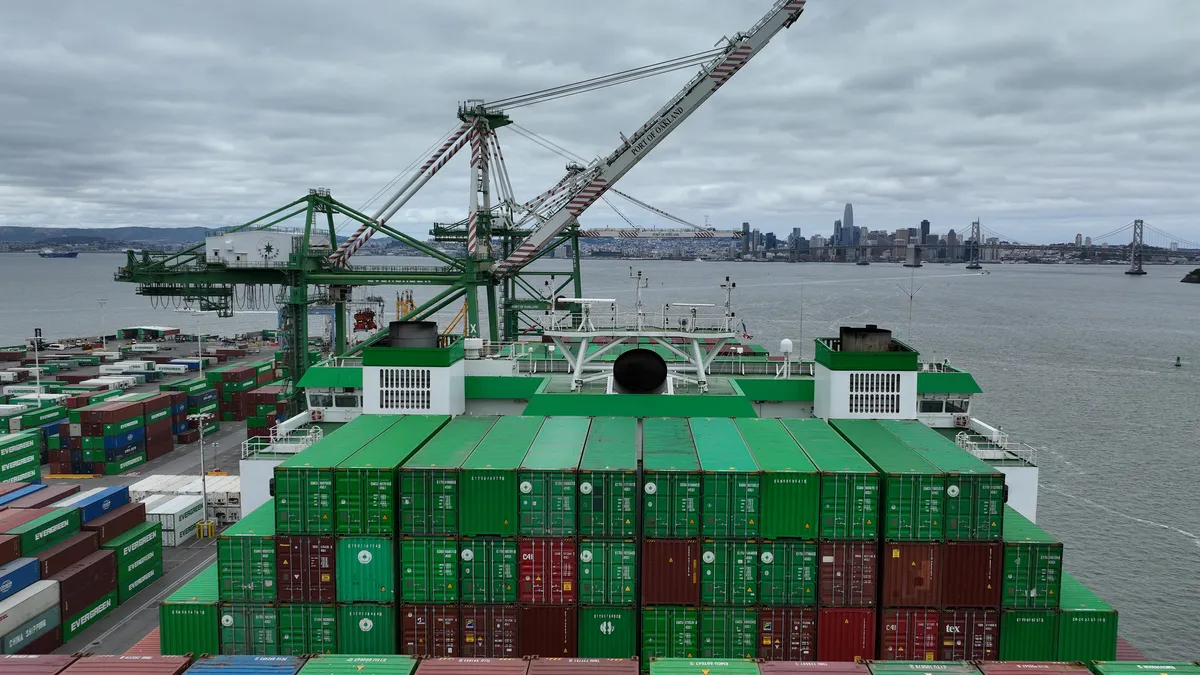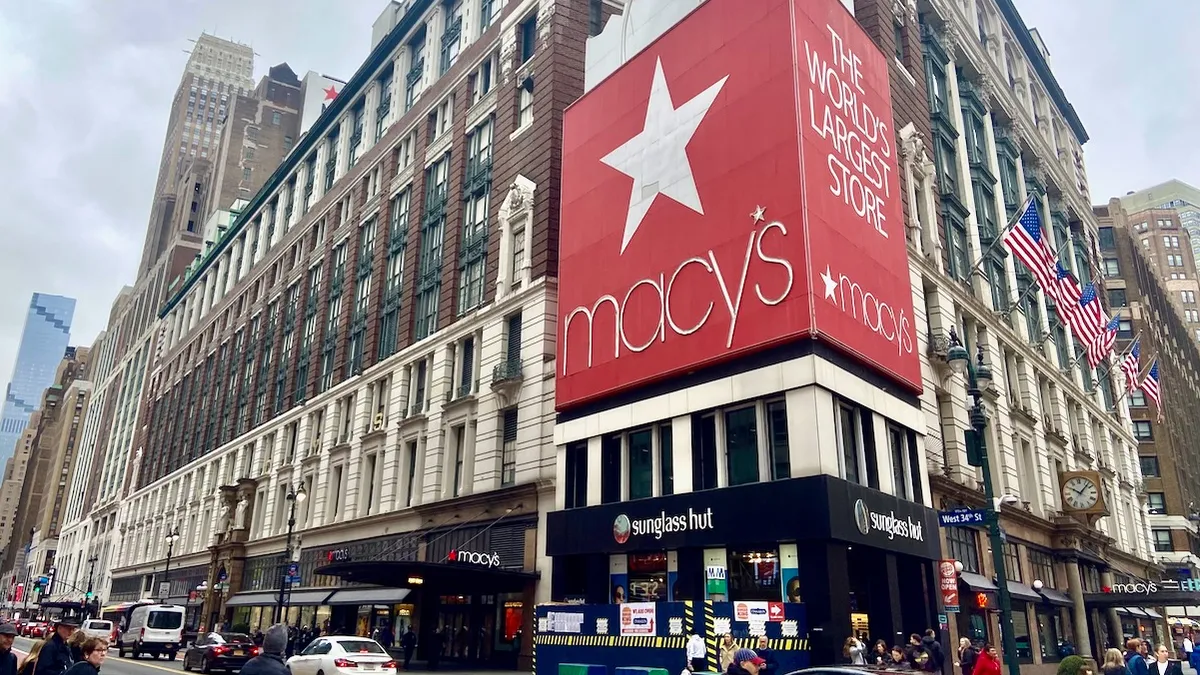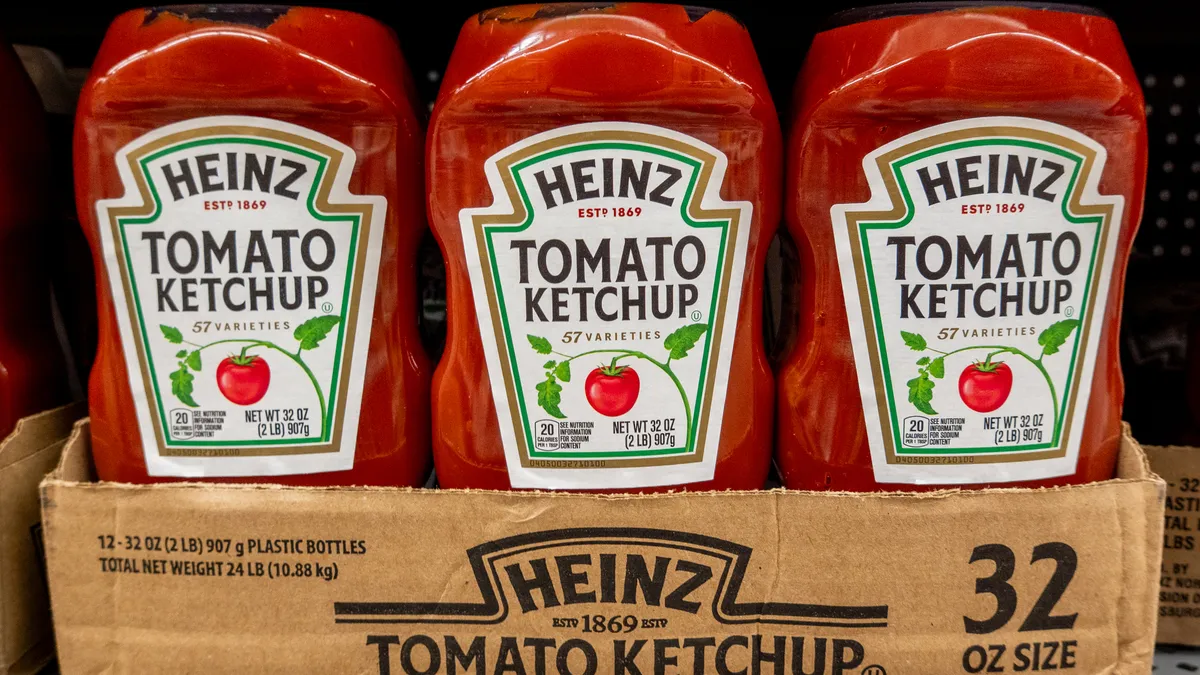Last month, supplier diversity and ESG data software company Supplier.io announced a partnership with global nonprofit the Carbon Disclosure Project to expand its database and give clients access to more environmental and social supply chain data.
The collaboration allows customers to pair Supplier.io’s extensive supplier diversity data with disclosures more than 23,000 companies make to CDP, providing insights on companies’ scope 1, 2 and 3 emissions data; CDP’s climate scores; and science based targets in one place. Supplier.io CEO Aylin Basom told ESG Dive that the company began looking to extend its offerings as companies have increasingly looked to them for additional transparency into their supply chains.
“This is much more than regulations,” Basom said. “We are seeing so much from the top performing companies, how much they really benefit from responsible procurement.”
Editor’s note: This interview has been edited for length and clarity.
Can you tell me a little bit about your background and what led you here?
AYLIN BASOM: I have been in the technology space now almost 20 years and I have been working always in the [software-as-a-service] space in different industries. Both HR software, and then previous to Supplier.io, I've worked for a company called Infor, which is the largest privately held [enterprise resource planning] company. Norwest Venture Partners invested in Supplier.io in 2021, and we connected and I joined Supplier.io in early 2022.
What got me here and what excited me here was the fact that it's such a mission-driven organization with a great purpose. There's not that many SaaS companies you can work at that you can say you make a positive impact both socially and environmentally. So that's what really excited me: the mission, the culture [and] the amazing kind of partnerships that we've forged while I'm here.
What is the significance of the CDP collaboration to both the company and the broader market?
One of the biggest things that we hear from companies is, “Listen. Yes, I want to reduce my risk and ensure continuity of my supply chain. But it is equally important that you have to solve for supplier data fragmentation.” For us to be able to measure the economic and environmental impact of the supply chain, it was very important for us to have the CDP data as well. We would have not been able to provide a comprehensive solution without the CDP as part of our data source.
Where does this move the market as far as creating more transparency in supply chain data, as well as confidence in the reliability of scope 3 emissions data?
There are data collection and measurement challenges for the organizations, period. And that's one of the things that we solve for. [The executives responsible for procurement at companies] have difficulties collecting and managing accurate and reliable ESG data from suppliers. It's extremely manual, otherwise. There's poor data quality. Sometimes [there is] supplier resistance for providing information, which is impacting all companies’ capabilities to be able to really do accurate reporting.
The other part of it is a lot of companies are prioritizing scope 3 emissions. There's an increasing pressure from consumers, stockholders, employees, along with the changes to the regulatory landscape in the EU and California. Companies are very much under pressure to disclose their progress. The company's environmental impact, the largest [area] where they have an impact is, with their scope 3. It's extremely critical for them to be able to focus on that if they want to reduce their footprint and move towards net-zero. But it's hard to define [and] track.
In our business model, any company first comes to us and says, “Here's my suppliers. Here's my [procurement] spend. I don't have any intelligence in these suppliers other than their name and maybe their address. We want to know more.” We're putting a lot of lenses on those suppliers. Not only are we able to tell them and say, “Here's how many suppliers you have today that you're spending time and money with that is social or diverse or small business, local businesses or sustainable business,” but [also the] ability to calculate scope 3, ensuring that they also know — within their supply chain — who are some of the biggest emitters. [That way] they can have visibility into that and then be able to come up with some kind of a plan. How can you get to net-zero if you don't know who your largest carbon emitters are within your supply chain?
If we can give companies looking at their supply chain the largest carbon emitters, they have two options. Option A: They can work with that supplier, and make sure that the supplier can start putting some processes in place to improve their rating. Or [Option] B: They might have to look at alternative sourcing to replace that supplier to be able to meet their net-zero goal.
What would you say is one thing you're excited about from the CDP collaboration that someone just reading the release might not pick up on?
We have a mission, CDP has a mission and we're very aligned in the mission. But even though companies wanted to utilize CDP, they were having to go in to look at, one-by-one, their suppliers to see what the rating is. So, for CDP to be able to reach a wider audience, they can use us as a vehicle as much as we're using them and their data to do more good in the world. Now customers can come to one place [and] can really see and utilize the CDP data more, and that is impacting and having more visibility in their supply chain.
Looking at each supplier one-by-one is a very manual process and task. Through our combination there's some additional supplier intelligence and ease for companies to be able to utilize that [CDP data] so they can set goals and be able to come up with plans and meet their targets.
What are the trends you've seen in the sort of things and the data your clients are asking for?
There's a lot of obstacles that we hear constantly from the customers. And this is more than just data. Yes, data is extremely important. But we're hearing companies say things like, ‘Hey, [our] company thinks that if we invest in sustainable procurement, it might be more costly?’ Because we're going to invest in sustainable materials and technologies and processes, and maybe there's a higher upfront cost. We're having to partner with the companies to show that that is not the case.
The second part of it is the lack of supplier engagement. We are seeing more and more suppliers that are saying that they have fatigue. Think about how many places they're having to provide their information. That is something that we're hearing a lot both from the suppliers as well as the customers. Lack of engagement can be from either the lack of understanding about the benefits of sustainability or it can be also because of fatigue.
Then the other thing is regulatory challenges. There's so many changes constantly happening. There's inconsistency, there's unclear regulations across different regions, different industries. I'm seeing that a lot. Sometimes companies have the best intentions, but they are not able to really meet those regulations because they first need to understand it and they have to stay on top of it. Universally accepted standards are not existent right now. So we're talking a lot as we're meeting with the [Chief Sustainability Officers] and CEOs about that, and trying to make sure that they are feeling comfortable, [with] the data that they're getting, but also [with] how they're reporting, and if they're doing it in a right way.
The other thing that I would say is making sure that there is some kind of a C-suite engagement. I'm hearing this a lot: That for the actual programs to be successful, that, they're sometimes needing our help to get it in front of the C-suite right and saying, “Hey, we need a high level buy in, and we won't be able to achieve our goals without a C-suite champion for these programs.” The best of the best, [as far as] companies that are doing good things, there's an incredible C-suite engagement and buy in. The ones that are struggling, it's definitely starting from the top. We are seeing a lack of ongoing C-suite engagement and buy in for those organizations that are struggling with having a successful program.
How do you all navigate and figuring out those regulations and then walking your clients through them?
Whether it’s the Supply Chain Due Diligence Act, or the EU Corporate Sustainability Reporting Directive — there's all these [regulations] that are out there — California has their own regulations. And all of them require companies to do some kind of reporting as it relates to environmental and social responsibility. And all of them might have different kinds of requirements. But regardless, we don't do anything around scope 1 and 2 [emissions]; we're always about supply chain. For companies to have compliance with these regulations, they need data, they need to show their impact of their global supply chains.
Their biggest thing is, “We need to be proactive in understanding and adopting these regulations to avoid legal and reputational risk.” They might come to us and tell us literally, “Hey, I need to do this reporting. I have no idea, no insight. And just give me the insight of our supply chain impact and visibility into that data.” We do it and then we review with them.
Final thoughts?
Make sure that you get a third party to help with data. How can you measure your success if you can't rely on the data? Make sure that your data is good, accurate [and] that you can trust in it. If you're going to [or] if you're trying to develop a robust sustainable procurement program, you're going to have to invest in tools, technology and data so you can make those procurement decisions and showcase your impact.























